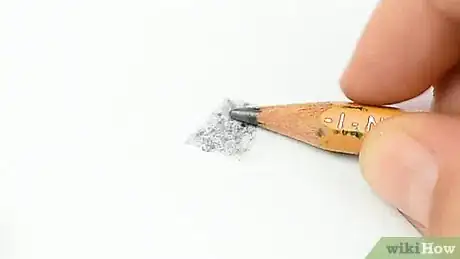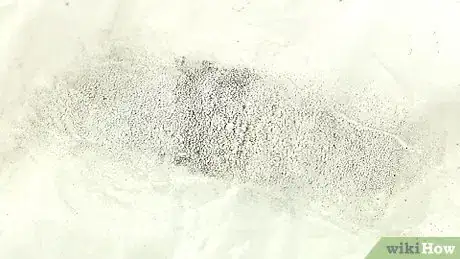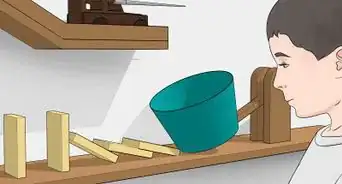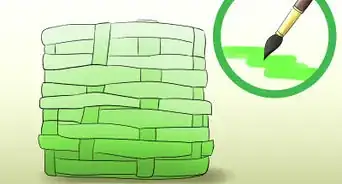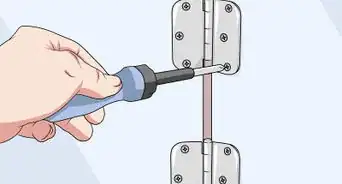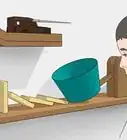This article was co-authored by wikiHow Staff. Our trained team of editors and researchers validate articles for accuracy and comprehensiveness. wikiHow's Content Management Team carefully monitors the work from our editorial staff to ensure that each article is backed by trusted research and meets our high quality standards.
There are 8 references cited in this article, which can be found at the bottom of the page.
The wikiHow Video Team also followed the article's instructions and verified that they work.
This article has been viewed 49,035 times.
Learn more...
Graphene is the wonder material of the century. Considering its relative strength compared to its weight, it is harder than steel and diamonds and also the best conductor of heat and electricity. And it's only 1 atom thick! You can make your own graphene at home, but be aware that it is more on the experimental level—you won’t be able to produce quantities large enough to do anything with. If during your experiment you find a cost-effective way to mass-produce the graphene, you could become rich and famous!
Steps
Using the Sticky Tape Method
-
1Deposit a thick layer of graphite onto a piece of paper with a lead pencil. Start out by drawing just a small polka dot or a 1 centimetre (0.39 in) line to get a feeling for the process. Go over the shape 2 or 3 times to get a nice, thick layer.[1]
- Alternatively, you can purchase powdered graphite at your local department or home improvement store for about $10.00 for 6 ounces (170 g). Use tweezers to place a small amount of the powder onto the piece of paper. A pinch would be too much.[2]
-
2Cut a 2 inch (5.1 cm) piece of tape and place it on the graphite. Position the tape over the graphite so that the graphite will be about three-quarters of the way down the tape. Press the tape down on the graphite and then gently peel it off of the piece of paper.[3]Advertisement
-
3Fold the piece of tape in half and then peel it apart. Grasp the tape on the edges and only fold it enough to cover the graphite. If you fold it completely in half, it will be difficult to open it up and pull it apart again.[4] Here, you are splitting the layers of graphite and separating the carbon atoms—which is necessary to get graphene.[5]
- Alternatively, you may place a fresh piece of tape on top of the original piece and then peel it off.
-
4Repeat the process of folding and peeling about 20 times. Each time you peel the tape off, the graphite layers get thinner and thinner. After about 20 times of peeling, you should end up with a layer of graphite that is only 1 atom thick. This is graphene.[6]
- If you are using fresh pieces of tape, rather than folding, place the third piece of tape on top of the second piece; the fourth piece of tape on top of the third, and so on.[7]
-
5Use a microscope to tell how many layers of graphite you have. Place the piece of tape, sticky side down, on a microscope slide. View the slide between 100x and 400x magnification. If you used the same piece of tape folded on top of itself multiple times, you will notice that some spots will be darker and some will be lighter. The lighter spots are the thinnest layers and the lightest spot is the graphene.[8]
- If you used fresh pieces of tape to peel layers each time, use your final piece of tape (about the 20th piece) to place under the microscope.
Using a Kitchen Blender
-
1Put 20–50 grams (0.71–1.76 oz) of graphite powder into a kitchen blender. If you don’t have graphite powder, you can make some by pulverizing a few pencil leads in a pulverizer or grinder.[9] Use a high-power kitchen blender of at least 400 watts to get the best results.[10]
- Be aware that you can no longer use this blender to make food or drinks after using it with graphite.
-
2Pour 10–25 millilitres (0.34–0.85 fl oz) of liquid dish soap into the blender. The detergent acts as a surfactant which works to suspend the graphene particles in the mixture. It also prevents the particles from clumping together.[11] The brand of dish soap you use doesn’t matter, however, the amount you add to the mixture does.
- The exact amount of dish soap that’s needed depends on the properties of the graphite powder and whether there are any other contaminants in the sample. Unfortunately, these factors cannot be known without the use of advanced lab equipment.[12]
- Experiment with adding amounts within the 10–25 millilitres (0.34–0.85 fl oz) range to start, and then do additional experiments by adding either more or less soap.
-
3Add .5 litres (17 fl oz) of water and blend on high for 10-30 minutes. As the graphite is blended, it will create a black liquid that may be frothy. Eventually you will begin to notice tiny flakes forming on the surface of the liquid and on the side of the blender.[13]
- Without lab equipment, it is difficult to distinguish between actual flakes of graphene and small flakes of graphite. In general, if the graphene particles are too big (still graphite), they will sink to the bottom of the blender; if they are smaller, they will float to the top. Particles that are suspended mid-water are nanoparticles, and are definitely graphene. [14]
-
4Pour the mixture into a glass jar and allow it to sit for 2-3 days. In a lab, they centrifuge the mixture to separate the graphene from the liquid.[15] Since it is unlikely that you have access to a centrifuge, simply pour the liquid mixture into a glass jar and let it sit for a few days.[16]
- This resting period will allow the graphene to separate from the larger particles of graphite.
Community Q&A
-
QuestionWhy cant I use the blender anymore after I blend graphite?
 T. ChinsenTop AnswererTh fine graphite residue in the blender is difficult to remove completely. Anything processed after the graphite will pick up the residual particles. Any food item may end up with a graphite flavor, as the fine particles with behave like salt.
T. ChinsenTop AnswererTh fine graphite residue in the blender is difficult to remove completely. Anything processed after the graphite will pick up the residual particles. Any food item may end up with a graphite flavor, as the fine particles with behave like salt.
Things You’ll Need
- Lead pencil
- Powdered graphite
- Tape
- Kitchen blender
- Dishwashing liquid
References
- ↑ http://www.graphene-battery.net/graphene.htm
- ↑ http://www.wired.co.uk/article/make-your-own-graphene
- ↑ http://www.wired.co.uk/article/make-your-own-graphene
- ↑ https://youtu.be/LwmxSjydPEE?t=177
- ↑ http://www.wired.co.uk/article/make-your-own-graphene
- ↑ http://www.wired.co.uk/article/make-your-own-graphene
- ↑ http://www.graphene-battery.net/graphene.htm
- ↑ http://www.wired.co.uk/article/make-your-own-graphene
- ↑ http://www.graphene-battery.net/graphene.htm
- ↑ https://www.zmescience.com/science/physics/making-graphene-kitchen-blender-4254/
- ↑ http://www.graphene-battery.net/graphene.htm
- ↑ https://www.newscientist.com/article/dn25442-make-graphene-in-your-kitchen-with-soap-and-a-blender/
- ↑ https://youtu.be/T-gFkbuVJwA?t=81
- ↑ http://www.graphene-battery.net/graphene.htm
- ↑ http://blogs.nature.com/news/2014/04/how-to-make-graphene-in-a-kitchen-blender.html
- ↑ https://youtu.be/_FlCvZvzDPM?t=269
- ↑ https://www.newscientist.com/article/dn25442-make-graphene-in-your-kitchen-with-soap-and-a-blender/
About This Article
To make graphene, start by using a lead pencil to deposit a layer of graphite onto a sheet of paper, going over it 2-3 times to make it as thick as possible. Next, place a 2-inch piece of sticky tape face down on the graphite, pressing down gently. Fold the piece of tape in half, then peel it back apart. Repeat this folding and peeling process 20 times, making the graphite layer thinner and thinner until you’re finally left with graphene. To learn how to make graphene using a blender and graphite powder, keep reading!
